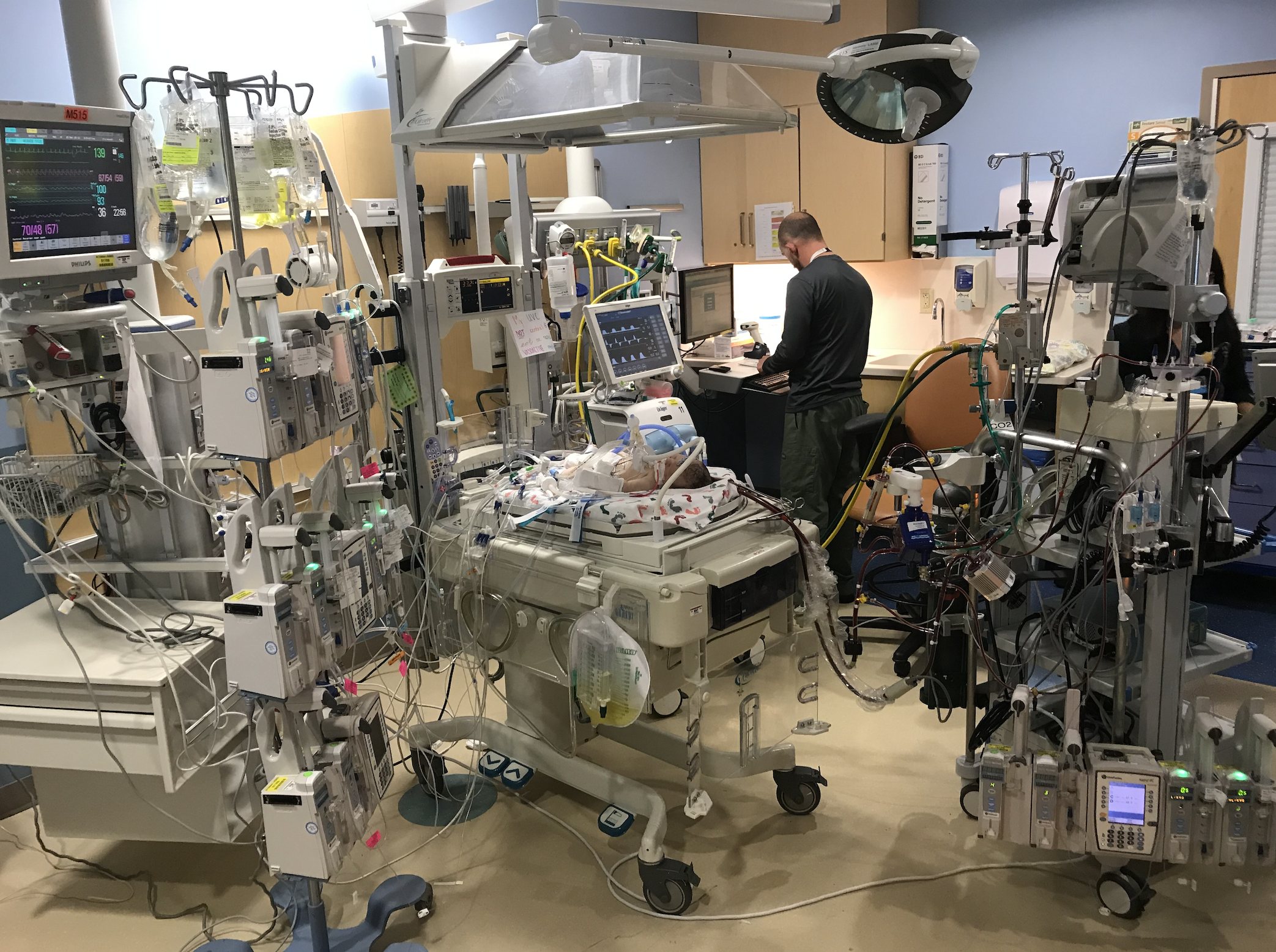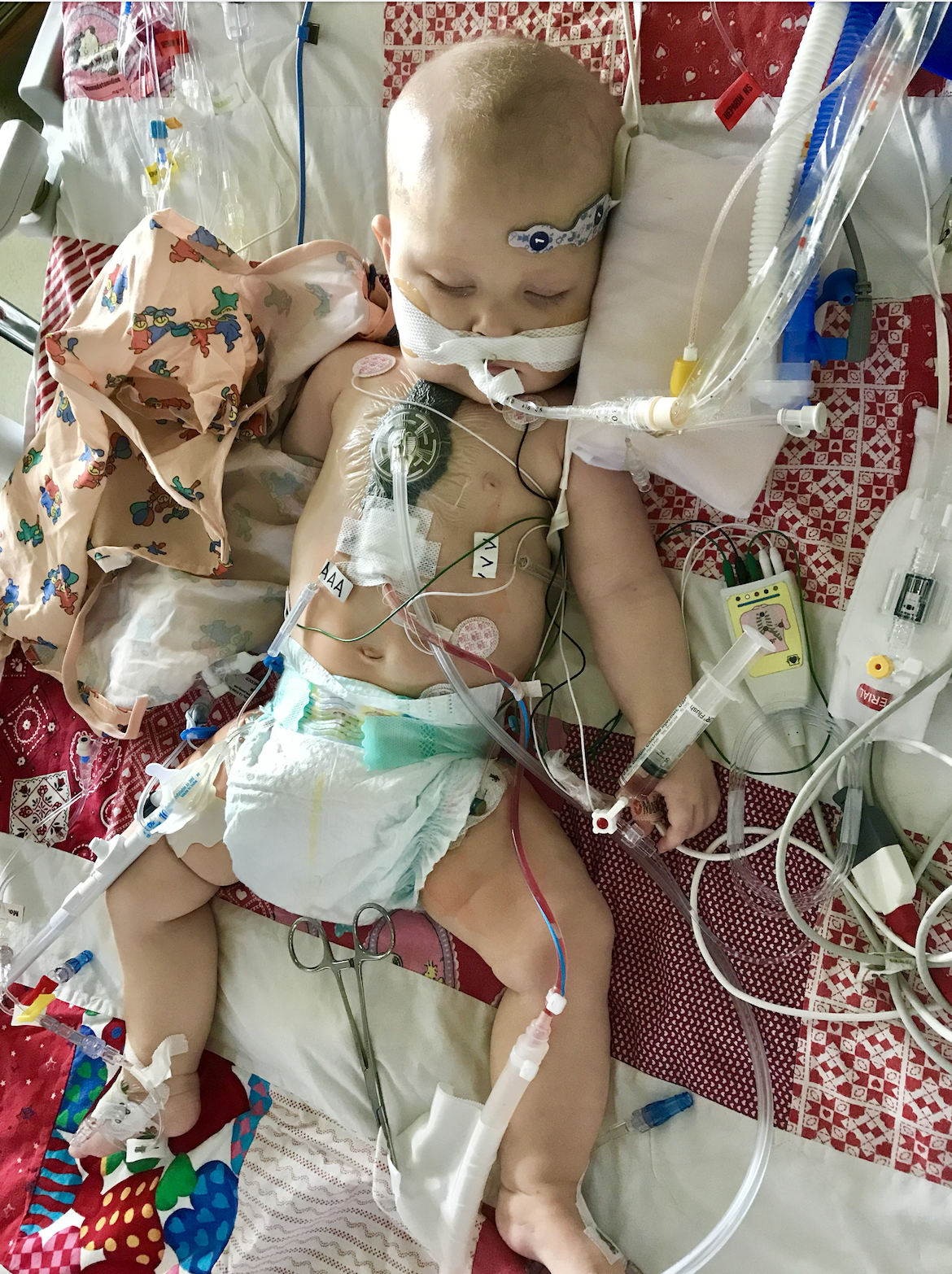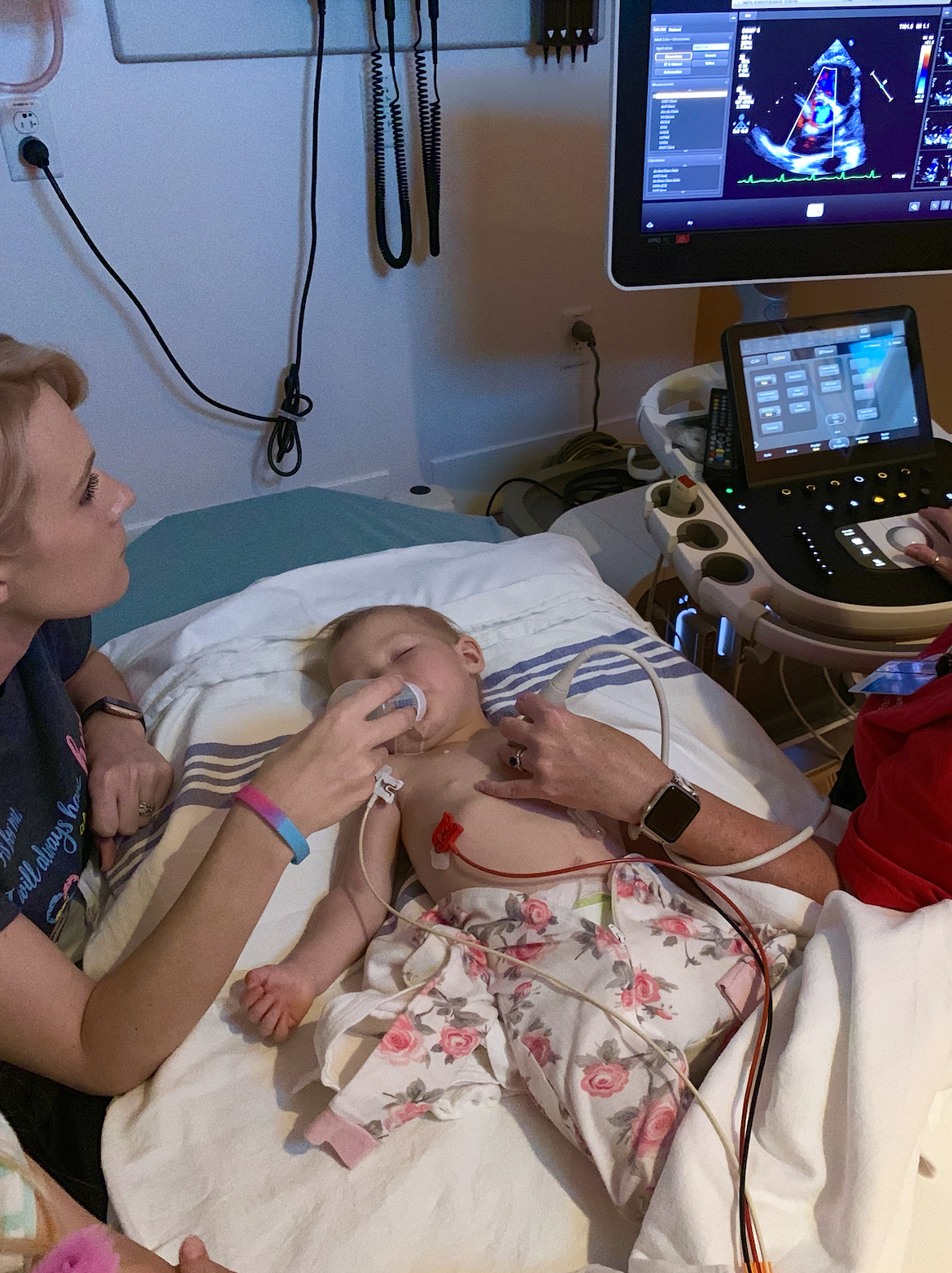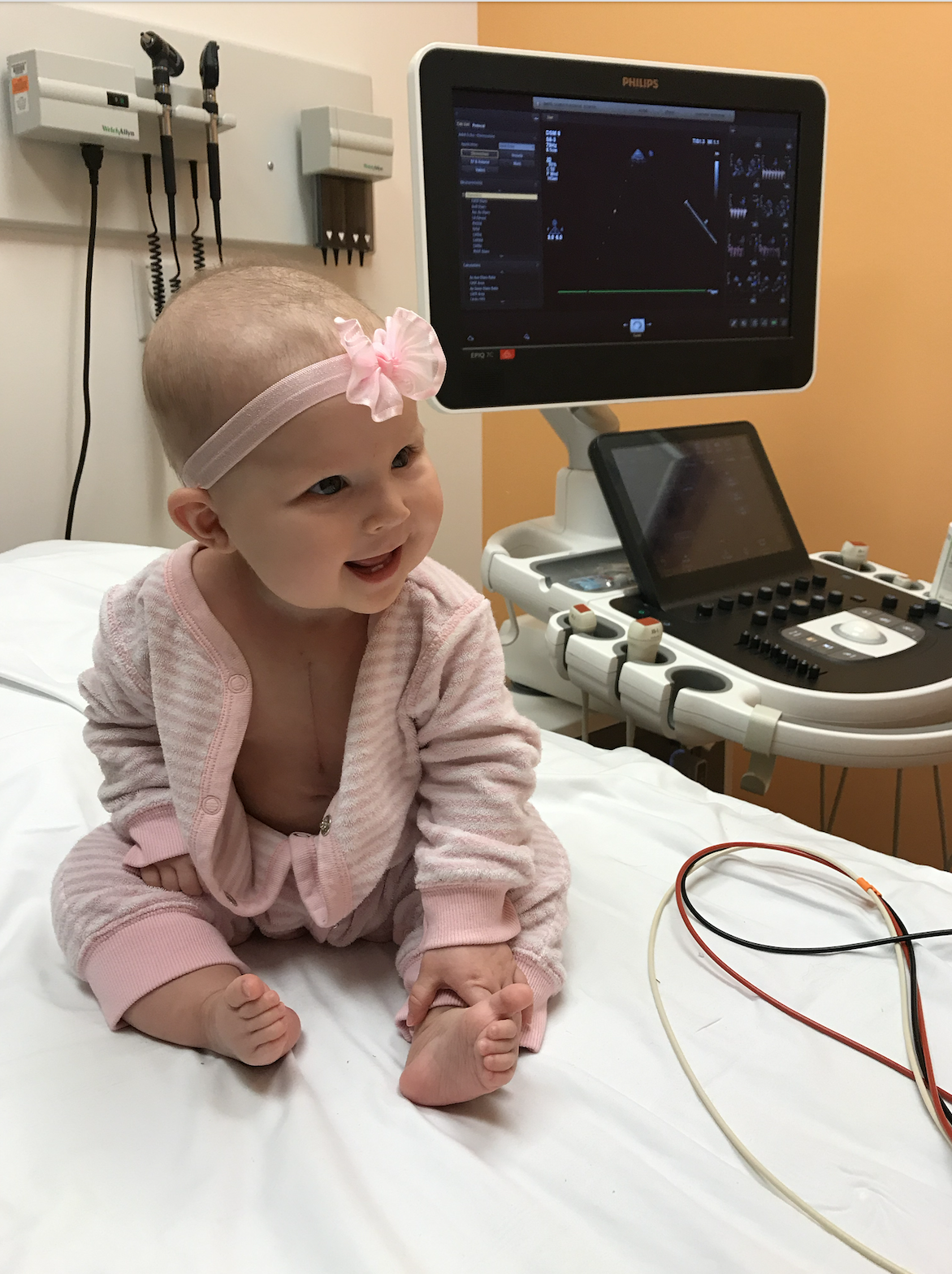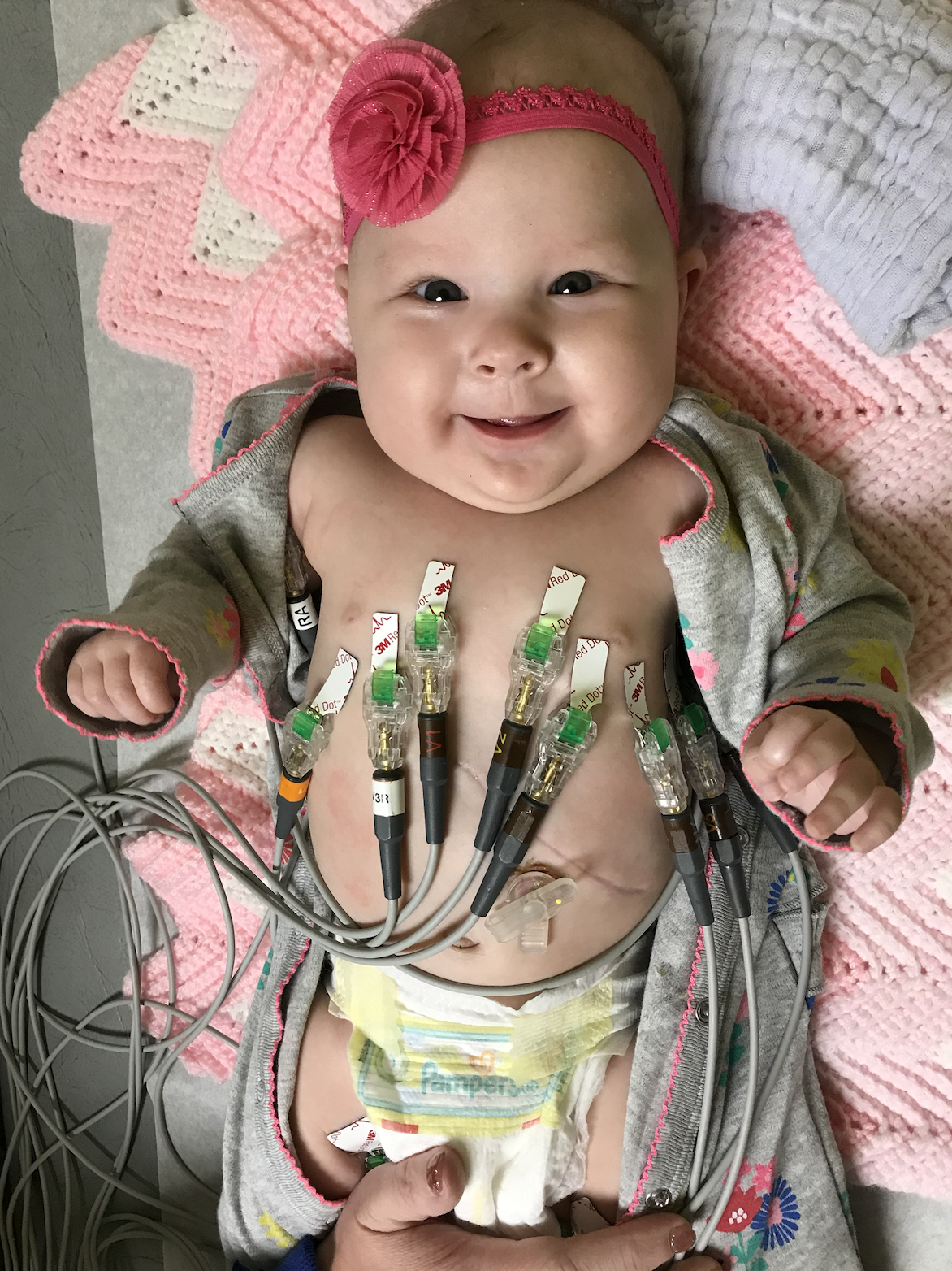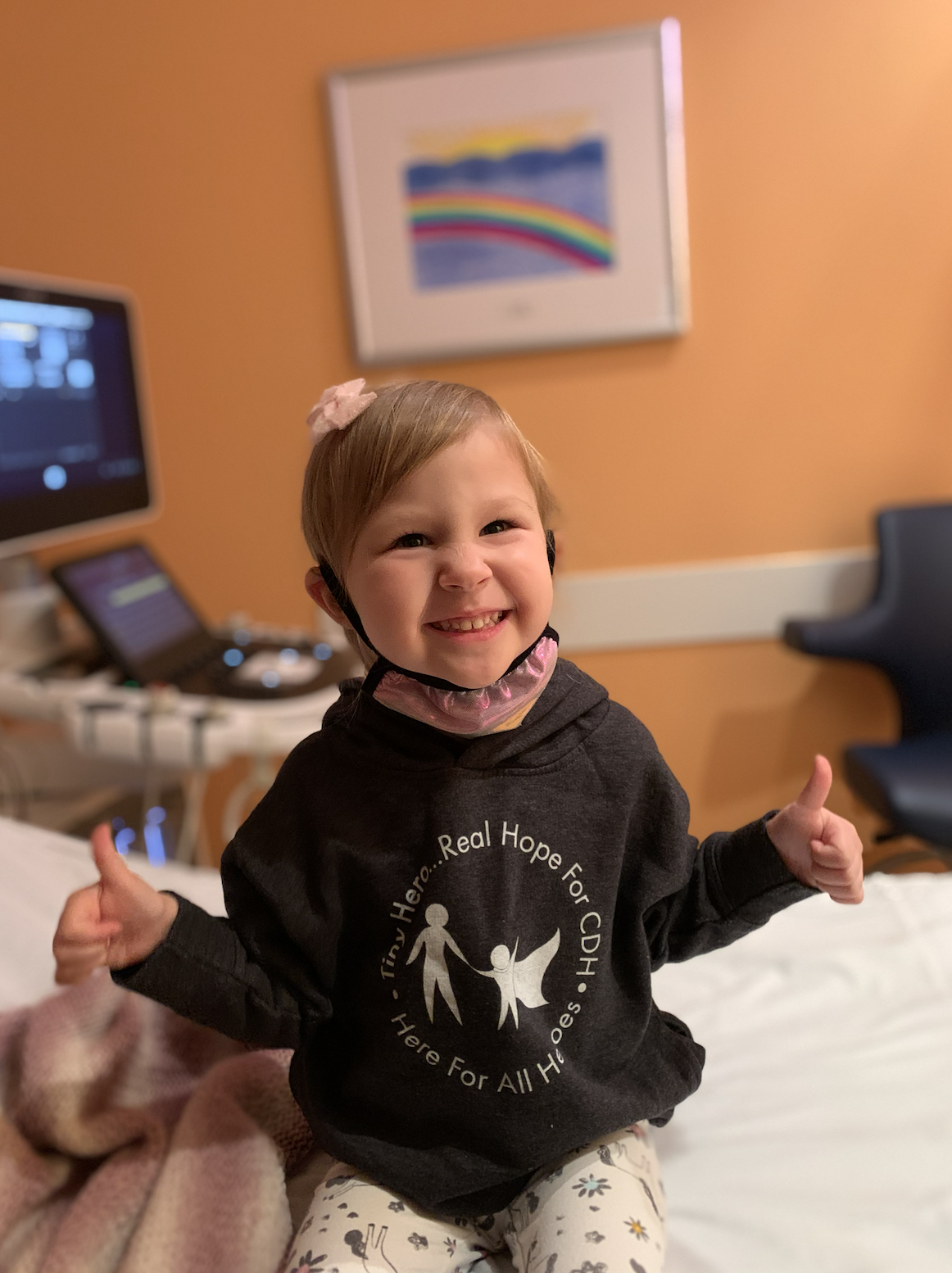Real Hope for CDH and CHD
Learning that your child faces CDH can be very daunting, and even more so when learning they face a second diagnosis. Approximately 15% of CDH patients are also diagnosed with a Congenital Heart Defect (CHD). Of those CDH patients diagnosed with a CHD, about 40% are considered critical CHDs, meaning they will require surgical intervention within the first year of life.* Luckily, medical advances and amazing surgeons have allowed these children not only to survive but thrive!!
In 2018, our family relocated from Ohio to Florida in preparation for Scarlett’s birth. At home, she was predicted to have only a small chance at survival, but we found a team led by Dr. David Kays, who predicted a 95% chance of survival under their expert care. It was difficult to deliver away from home and family, but we were also filled with gratitude for the higher chances of bringing our daughter home. In March, she was born with a severe left-sided hernia with her stomach, spleen, intestines, and 30% of her liver in her chest. Her lung volume was estimated at 20%, and she spent two weeks on ECMO. After weaning from ECMO, we felt we had overcome the most difficult part of our journey and set our sights on the next steps to getting us home.
However, prenatally, the team suspected she might have had a heart defect known as coarctation of the aorta, but we would not be able to confirm or rule out the diagnosis until after delivery. While many CHDs are diagnosed prenatally, others are more difficult to confirm due to the crowding of the heart and lungs. Additionally, certain defects cannot be diagnosed while on ECMO due to the temporary changes in blood flow from the machine. The day after her transition off ECMO, we eagerly awaited the news that her heart was healthy. However, a cardiologist met with us to share that she had been diagnosed with a hypoplastic aortic arch and mitral stenosis. This meant that her aortic arch was too small and that her valve was not opening and closing correctly. We would need to take a “wait and see” approach with her heart while our CDH team addressed the most immediate challenges, like weaning from the ventilator and learning to eat. It was crushing to learn we faced another big hurdle, especially one that came with so much uncertainty.
Cardiology monitored her weekly with echocardiograms, EKGs, and four-point blood pressure checks (this is a blood pressure check on all four limbs to see how they correlate). These checks gradually showed decreased blood pressure in her lower limbs, which meant that blood flow was restricted from her heart. The echos also gradually showed that her body was growing, but the aorta was not.
After four months of CDH treatment, we prepared for discharge, but her team shared the tough news that she would require open-heart surgery – something we desperately hoped to avoid. Without surgery, her heart would become overworked trying to pump blood through the narrowed vessel. Additionally, we learned that because of her history of ECMO, the need for a second cannulation onto bypass would be more challenging and would come with the additional risk of reduced brain perfusion. We felt overwhelmed, but we held onto the hope that had carried us that far. We knew we had already overcome big odds and that we could overcome this too. The hospital pastor spent many hours in our room over the course of our stay, and he paid even more visits to our room after this news. We prayed with our pastor, we prayed with our nurses, and we prayed with our housekeeping staff. Back home, we knew we had a whole community of friends and family who were praying for us, too and sending love from afar. That is where we focused our thoughts on the days that felt heavy as we faced more unknowns.
At six months old, she underwent open-heart surgery. She spent eight long hours in the operating room, which included time to transition on and off bypass. During this time, her heart was stopped through hypothermic cooling, repaired, and then restarted through a warming process. This particular method, called circulatory arrest, helps to protect both the heart and brain during surgery. We received an update every 90 minutes, but I will never forget the relief we felt when the nurse told us that her little heart was beating again! We also learned after surgery that her aortic arch was reconstructed using a donated pulmonary artery. We are deeply grateful to the donor and their family for choosing tissue donation. The repair using donor tissue means better long-term outcomes and will hopefully prevent the need for additional repairs as she grows.
Although she has faced big hurdles, Scarlett is now a witty and thriving four-year-old who loves preschool, gymnastics, and playing with her sisters! In addition to annual CDH check-ups, she requires an annual echo to monitor the surgical site and overall heart health. We are very grateful that her aortic arch has been growing with her and will likely not require any additional intervention. Scarlett is beginning to understand more about her story and often talks fondly of the doctors who saved her life. She enjoys looking through scrapbooks and asking questions about her bumpy beginnings.
As we reflect on our time throughout this journey, our advice to other parents is to seek multiple medical opinions. If you face more than one diagnosis, it is especially important to find a team who understands how each individual diagnosis collectively impacts the treatment options and care plan. We also want other families to know that the best care might be far from home, but there are many resources available to help you navigate relocating. This includes financial grants, support organizations, and an entire community of families who are eager to talk with you about how to make it work.
We hope that Scarlett’s story is a reminder to all CDH/CHD families that despite all the uncertainty you may feel, especially with unexpected hurdles, there is real hope for both CDH and CHD!
*Montalva L, Lauriti G, Zani A. Congenital heart disease associated with a congenital diaphragmatic hernia: A systematic review on incidence, prenatal diagnosis, management, and outcome. J Pediatr Surg. 2019 May;54(5):909-919. doi: 10.1016/j.jpedsurg.2019.01.018. Epub 2019 Jan 31. PMID: 30826117.
About the Author:
Ashley Beatty-Smith is the proud mom of #TinyHero Scarlett! Ashley lives in Ohio with her husband, Ian, and their three daughters, Ryleigh, Scarlett, and Lyla. Her children are part of the CDH, CHD, and Type 1 Diabetes communities. She is an advocate for equitable access to healthcare and will soon finish a graduate degree focused in health policy and advocacy. She is eager to talk with newly diagnosed families as they navigate the diagnosis and care options.
Would you be interested in guest writing for Tiny Hero? We love to share different voices in our blogs. Any Tiny Hero parent, sibling, grandparent, etc., can potentially write for us! Send us an email to learn more: Stories@TinyHero.org

